Baking gluten free muffins is fun for many home cooks and baking enthusiasts, but it’s not always smooth sailing. Gluten free baking is often compared to a big science experiment, and even experienced bakers can run into problems. Let’s explore some common muffin-baking problems and discuss how to fix them.
This post may contain affiliate links. Please read our Disclosure Policy.
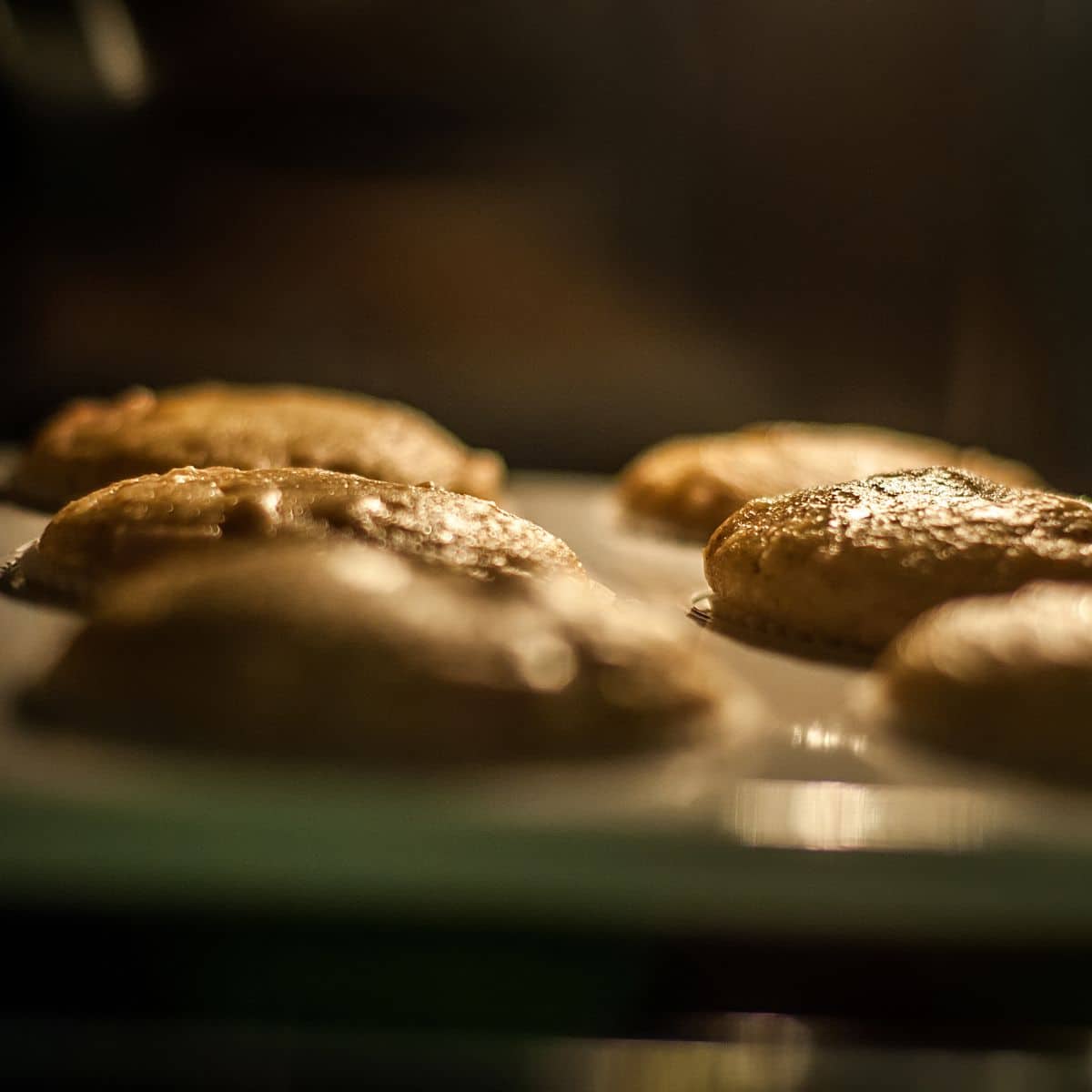
Delicious, fluffy gluten free muffins are not hard to achieve, but many factors can potentially cause trouble. When trying to bake the perfect batch of muffins, you can have issues with rising and texture to problems with the flavor and moisture.
Sometimes, a recipe can fail if you use the wrong gluten-free flour blend. Every blend will produce different results because they all have different grain-to-starch ratios. If you can’t use the same flour blend as the recipe creator, you may need to adjust the moisture level by adding more or less liquid. You can read more about which gluten free flour blends to use.
Need help with your muffins? I have a guide filled with my favorite tools for making muffins.
Also, if you wonder which gluten free flour blend is best for making gluten free muffins, I tested four gluten free flour blends in my popular gluten free muffins recipe to see which performed the best.
Flat or Sunken Muffin Tops:
If your muffin tops are flat or sunken in, it could be due to three main reasons.
- Flat or sunken muffins are common problems if the muffin batter is overmixed.
- Another cause is using too much leavening agent (baking powder or baking soda). Using expired baking powder or soda can also cause issues.
- Do not open the oven door while the muffins are baking. That can also cause the tops of the muffins to sink.
- Lastly, if your muffin batter has too much liquid, it can cause flat, sunken muffin tops.
Flat or Sunken Muffin Fixes:
- Do not use a stand or electric mixer to mix your muffin batter. You want to mix the wet and dry ingredients by hand until the dry ingredients are just “barely” mixed.
- Check the expiration date of your baking powder or soda, and use the correct amount of leavening agent.
- Don’t open the oven door until the muffins are baked.
- Be careful to measure your ingredients correctly to avoid using too much liquid. Every gluten free flour blend will need varying amounts of moisture depending on the starch-to-grain ratios and if they have dried milk powder in the mix.
Tough or Dense Textured Muffins:
If your muffins have a tough or dense texture, this is either due to overmixing your muffin batter or you used a starch-heavy gluten-free flour blend.
To fix this problem, please see the above fixes section on a sunken muffin top for suggestions to prevent these issues.
If you find this gluten free muffins troubleshooting guide helpful, I have several great guides, including Gluten Free Cookie Troubleshooting, Gluten Free Cake Troubleshooting, and Gluten Free Bread Troubleshooting Guides.
Email This Recipe To Me!
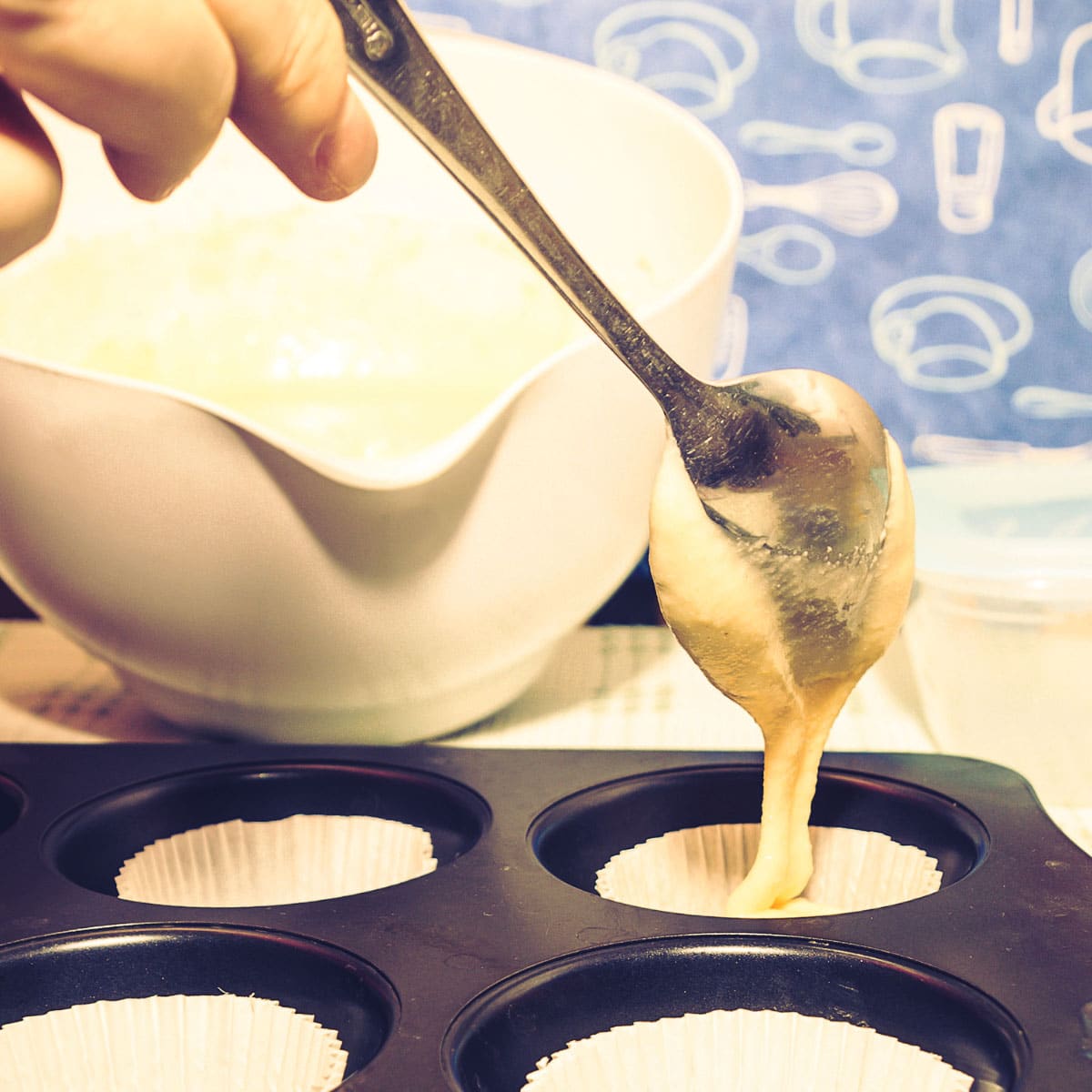
Uneven Muffin Shapes:
Muffins may be uneven if the batter is not evenly distributed in the muffin tin. To fix this, use a large
Muffins Stuck To The Pan:
Muffins may stick to the pan if the pan is not greased well or if you leave the baked muffins in the pan for too long after baking.
To fix this, use parchment paper muffin liners or grease the pan well before baking. I love using this La Touranglelle baking spray. (Note: do not use the Pam Baking Spray brand because it is not gluten free!)
When the muffins are baked, carefully remove them from the pan as soon as they are cool enough to handle. Place the hot muffins on a wire cooling rack.
Dry or Crumbly Muffins:
If you have dry or crumbly gluten free muffins, you need more liquid wet ingredients in your muffin batter. Every gluten free flour blend will have a slightly different amount of liquid needed. Blends with dried milk powder will need less liquid, but a starchy blend may need more.
Another reason for dry muffins is if you overbake them. Always look at your batter consistency. If your batter looks thicker than the photos shown in the recipe you are making, you may need to add more moisture.
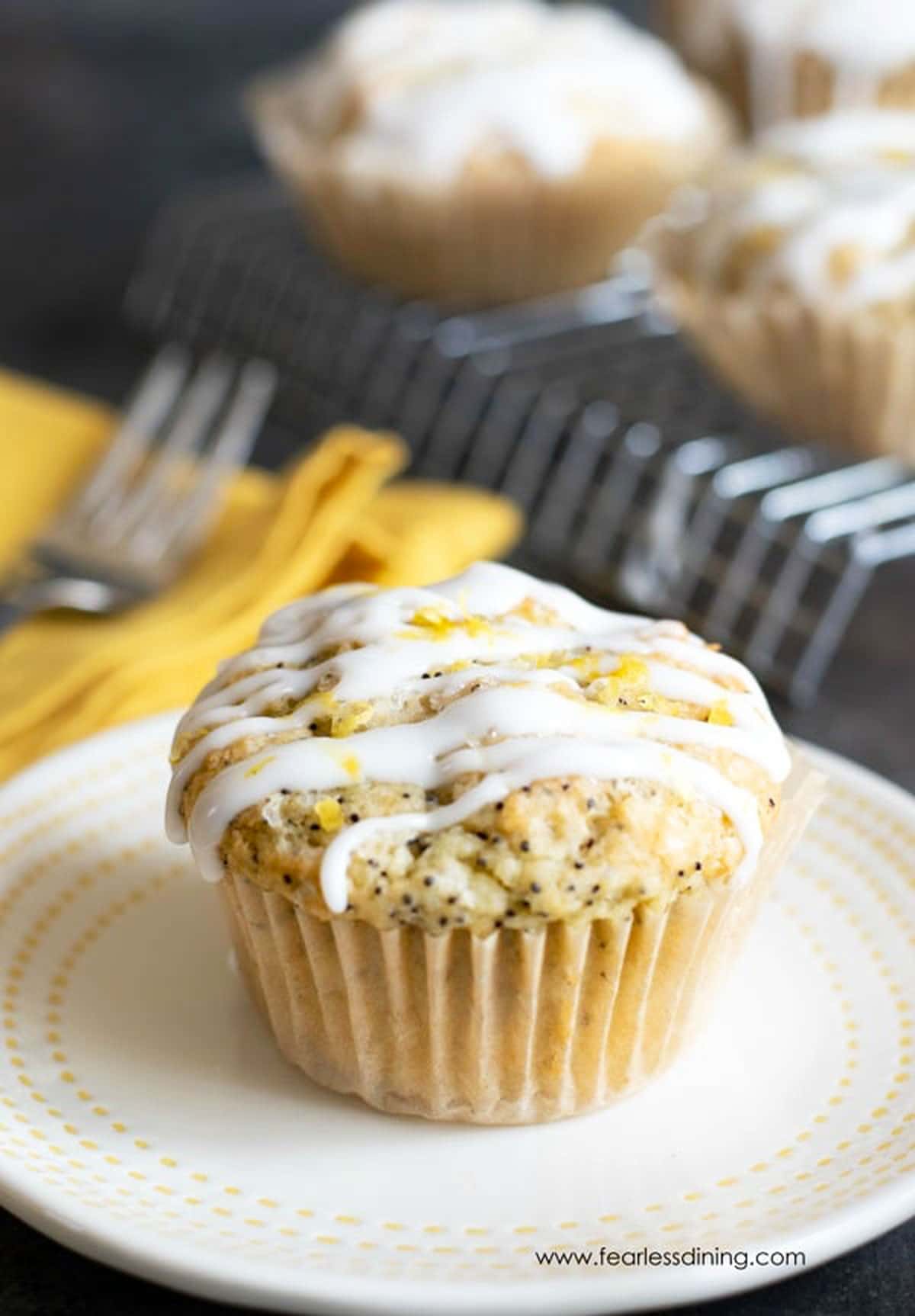
How To Get A Dome Muffin Top:
One of the things I love most about muffins is the big, fluffy, domed top. It is really easy to get this domed effect by following these tips:
- Use the right amount of baking powder: Baking powder makes muffins rise and helps to create a domed top. Use the amount specified in the recipe and double-check that it is fresh and not expired.
- Don’t overmix the batter: I have said this in almost every section, but do not overmix your batter. It really can ruin your gluten free muffins. Mix just until the ingredients are combined, and there are no lumps.
- Fill the muffin cups properly: Fill the muffin cups about 3/4 full, leaving some space at the top for the muffin to rise. They will not form domes if you don’t fill the muffin cups with enough batter.
- Bake at a high temperature: I only learned this trick a few years ago. This is a great way to kickstart the baking to rise the muffins quickly. Bake your muffins at a high temperature (around 425°F) for the first 5-10 minutes, then reduce the temperature to the level specified in the recipe. This initial high temperature will help create the domed top.
- Use a muffin tin with thick walls: A heavy-duty muffin pan with thick walls will help distribute the heat evenly so the muffins bake evenly.
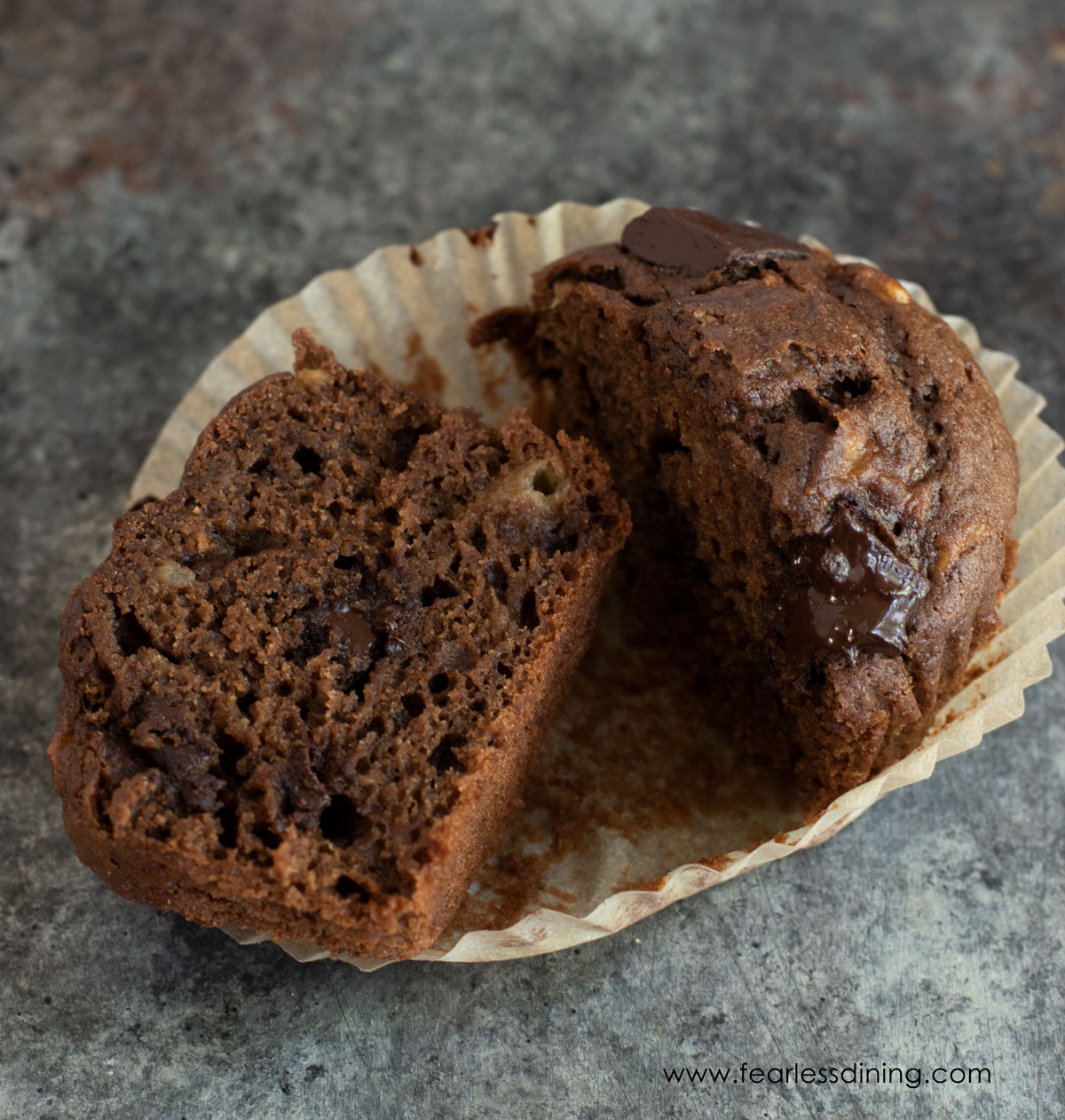
The Best Gluten Free Muffins Recipes:
- Gluten Free Chocolate Banana Muffins (pictured above) These muffins get rave reviews!
- Gluten Free Blueberry Muffins – This is a great base muffin recipe. Use blueberries or another fruit.
- Gluten Free Apple Muffins – The cinnamon apple flavors of these muffins are really good!
- Gluten Free Banana Oat Muffins – This is a classic muffin recipe. Be sure to use certified gluten free oats.
- Gluten Free Lemon Poppy Seed Muffins (pictured above)
- If time is short, try this Gluten Free Mug Muffin recipe. You can make it in under 3 minutes!
Have a tip?
We would love to hear if you have a great gluten-free muffin tip. Please leave a comment. Thank you!

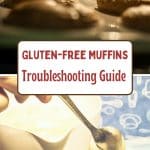
Wish I would have read about adding more liquid in muffins using GF flour as mine turned out crumbly. I made mincemeat muffins to use up the mincemeat. On some, to use it all up I added mincemeat between layers if you get the picture. They tasted fine as I added apricot brandy too. I’ll see how the layered ones are if they’re crumbly too.
Hi Earlyne, I have no experience with mincemeat…is it something moist like chopped fruit? If so, the added moisture will require you to add more flour. Keep in mind every gluten free flour blend has a different grain-to-starch ratio and this also can affect moisture. I am glad you saw the note, let me know how it goes after adding more flour.
Hello, I guess I’m not understanding why you should not use a mixer for gluten-free baking. I’ve baked for quite a while, and I have baked gluten free for about five years now.
How are you supposed to cream, butter and sugar without a mixer? I would really appreciate a reply.
Hi Lorna, Everyone has their own methods, and it sounds like you enjoy creaming butter and sugar. I find using a mixer over-mixes the batter, leading to very dense baked goods. Maybe it isn’t like that for other recipes, but I have noticed it with mine.